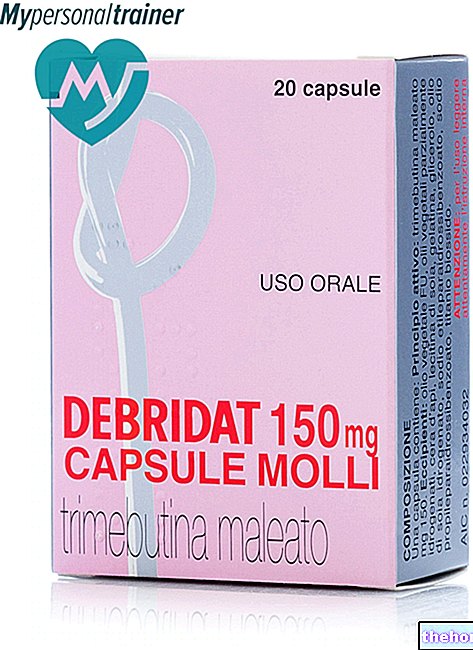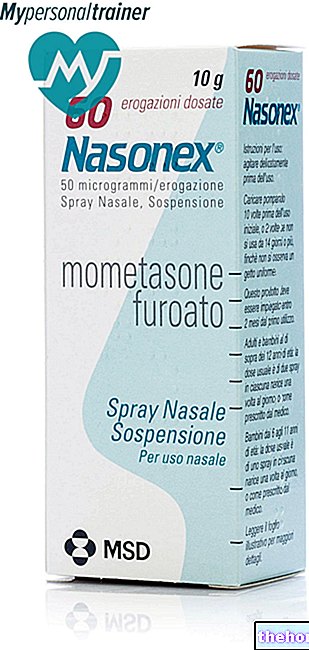Active ingredients: Fluocortolone pivalate, Fluocortolone caproate, Cincocaine hydrochloride
Ultraproct rectal ointment
Ultraproct package inserts are available for pack sizes:- Ultraproct rectal ointment
- Ultraproct suppositories
Indications Why is Ultraproct used? What is it for?
Ultraproct contains two active ingredients: fluocortolone (as pivalate and as caproate) and cincocaine hydrochloride.
Fluocortolone (pivalate and caproate) belongs to the category of medicines called corticosteroids, anti-inflammatory drugs.
Cincocaine hydrochloride belongs to the category of medicines called local anesthetics. Ultraproct is indicated for the treatment of internal and external hemorrhoids (swollen and inflamed veins inside the anal canal and around the anus), anal fissures (small wounds on the edge of the anus) and proctitis (inflammation of the rectum).
Talk to your doctor if you don't feel better or if you feel worse.
Contraindications When Ultraproct should not be used
Do not use Ultraproct
- if you are allergic to fluocortolone pivalate, fluocortolone caproate or cincocaine hydrochloride, or any of the other ingredients of this medicine (listed in section 6);
- if tuberculous, luetic (due to syphilis) or viral lesions (smallpox, chicken pox, vaccine pustules) are present in the area to be treated.
Precautions for use What you need to know before taking Ultraproct
Talk to your doctor or pharmacist before using Ultraproct.
Avoid contact with eyes.
Wash your hands thoroughly after using the medicine.
If there is a mycosis (fungal infection) in the area to be treated, your doctor will prescribe a local antifungal in combination.
The use, especially if prolonged of the products for local use, can give rise to sensitization phenomena (allergy). In this case, stop the treatment and contact your doctor to establish a suitable therapy.
In the event of local applications on large surfaces, on damaged skin or in the presence of an occlusive dressing, corticosteroids could be absorbed in such quantities as to cause undesirable effects at a distance.
The duration of treatment should not exceed 4 weeks whenever possible.
For those who carry out sporting activities: the use of the drug without therapeutic necessity constitutes doping and can in any case determine positive anti-doping tests.
Children
In very early childhood, the drug should be administered in cases of real need, under the direct supervision of the doctor.
Interactions Which drugs or foods can modify the effect of Ultraproct
Tell your doctor or pharmacist if you are taking, have recently taken or might take any other medicines.
Warnings It is important to know that:
Pregnancy and breastfeeding
If you are pregnant or breast-feeding, think you may be pregnant or are planning to have a baby, ask your doctor or pharmacist for advice before using this medicine.
Do not use Ultraproct during the first trimester of pregnancy, unless the benefits justify the potential risks to the baby.
If you are pregnant, use the medicine when clearly needed and under the direct supervision of your doctor.
Driving and using machines
Ultraproct does not affect the ability to drive or use machines.
Ultraproct contains castor oil
This medicine contains castor oil which may cause skin reactions.
Dose, Method and Time of Administration How to use Ultraproct: Posology
Always use this medicine exactly as described in this leaflet or as directed by your doctor or pharmacist. If in doubt, consult your doctor or pharmacist.
Apply a thin layer of rectal ointment.
During the first day, 3-4 applications of the preparation are also recommended to obtain a more rapid disappearance of symptoms; subsequently 2 applications per day will be sufficient.
To avoid relapses, the treatment should be continued with one application per day for a few more days after the complete disappearance of the ailments.
The intrarectal introduction of the ointment can be carried out by means of the special cannula attached to the package, taking care to carry out the application after the evacuation of the faeces.
Overdose What to do if you have taken an overdose of Ultraproct
In the case of accidental oral intake, symptoms such as convulsions, inhibition or arrest of respiratory functions and cardiovascular disturbances (depression or cessation of cardiac functions) may occur.
If you accidentally take an overdose of Ultraproct, notify your doctor immediately or go to the nearest hospital.
If you have any further questions on the use of this medicine, ask your doctor or pharmacist.
Side Effects What are the side effects of Ultraproct
Like all medicines, this medicine can cause side effects, although not everybody gets them.
Rare cases of local irritation with burning and cases of allergy have been reported in predisposed subjects towards one or more components of the drug, especially cincocaine hydrochloride.
In rare cases, allergic skin reactions may occur.
For prolonged periods of treatment (more than 4 weeks), local symptoms such as skin atrophy (thinning of the skin) may occur.
The low doses of active ingredients contained in the medicine make it unlikely the onset of secondary phenomena at a distance, from absorption into the body. Should these occur, they would have the general character of the classical secondary effects of corticosteroids, albeit of a very small entity.
Reporting of side effects
If you get any side effects, talk to your doctor or pharmacist. This includes any possible side effects not listed in this leaflet. You can also report side effects directly via the national reporting system at www.agenziafarmaco.it/it/responsabili. By reporting side effects you can help provide more information on the safety of this medicine.
Expiry and Retention
Keep this medicine out of the sight and reach of children.
Do not use this medicine after the expiry date which is stated on the package.
The expiry date refers to the last day of that month. The expiry date indicated refers to the product in intact packaging, correctly stored.
Validity after first opening: 3 months.
Store below 25 ° C.
Do not throw any medicines via wastewater or household waste. Ask your pharmacist how to throw away medicines you no longer use. This will help protect the environment.
Other information
What Ultraproct
- The active ingredients are: fluocortolone pivalate, fluocortolone caproate, cincocaine hydrochloride. 1 g of rectal ointment contains: 0.918 mg of fluocortolone pivalate, 0.945 mg of fluocortolone caproate, 5 mg of cincocaine hydrochloride.
- The other ingredients are: polyethylene glycol-400-monoricinoleate, hydrogenated castor oil, 2-octyldodecanol, castor oil, Citrus Rose fragrance oil.
Description of what Ultraproct looks like and contents of the pack
Rectal ointment, 30 g tube + 1 cannula.
Source Package Leaflet: AIFA (Italian Medicines Agency). Content published in January 2016. The information present may not be up-to-date.
To have access to the most up-to-date version, it is advisable to access the AIFA (Italian Medicines Agency) website. Disclaimer and useful information.
01.0 NAME OF THE MEDICINAL PRODUCT
ULTRAPROCT
02.0 QUALITATIVE AND QUANTITATIVE COMPOSITION
Each suppository contains fluocortolone pivalate 0.612 mg, fluocortolone caproate 0.630 mg, cincocaine hydrochloride 1 mg.
For the full list of excipients see section 6.1.
Each g of rectal ointment contains 0.918 mg fluocortolone pivalate, 0.945 mg fluocortolone caproate, 5 mg cinchocaine hydrochloride.
Excipients with known effect: Hydrogenated castor oil.
For the full list of excipients see section 6.1.
03.0 PHARMACEUTICAL FORM
Suppositories, rectal ointment.
04.0 CLINICAL INFORMATION
04.1 Therapeutic indications
The association contained in the Ultraproct allows the polysymptomatic treatment of the anorectal varicose syndrome.
The availability of both suppositories and rectal ointment allows to reach the internal and external venous sectors that can be involved in the varicose phenomenon at the same time.
Internal and external hemorrhoids, anal fissures, proctitis.
04.2 Posology and method of administration
•Suppositories
Usually one suppository a day is sufficient.
After the complete disappearance of the disorders, it is recommended to continue the treatment for another week with the use of 1 suppository every 2 days.
It is advisable to introduce the suppository after defecation.
• Rectal ointment
A thin layer of rectal ointment is usually applied twice a day. On the first day, 3-4 applications of the preparation are also recommended to obtain a more rapid disappearance of the symptoms.
To avoid relapses, the treatment should be continued with one application per day for a few more days after the complete disappearance of the ailments.
The intrarectal introduction of the rectal ointment can be carried out by means of the special cannula attached to the package, taking care to apply it after the stool has been evacuated.
The duration of treatment should, when possible, not exceed four weeks.
Pediatric patients: in very early childhood, the product should be administered in cases of real need under the direct supervision of the doctor.
04.3 Contraindications
Hypersensitivity to the active substances, especially cincocaine, or to any of the excipients.
Tuberculous and luetic processes in the region to be treated, smallpox, chicken pox, vaccine pustules.
04.4 Special warnings and appropriate precautions for use
In the case of mycosis present in the area to be treated, topical antifungals are indicated.
The use, especially if prolonged, of products for topical use can give rise to sensitization phenomena.
In this case it is necessary to interrupt the treatment and institute a suitable therapy.
In the event of topical applications on large surfaces, on damaged skin or in the presence of an occlusive dressing, corticosteroids may be absorbed in such quantities as to cause systemic undesirable effects.
Avoid contact with eyes. It is recommended to wash hands thoroughly after use.
If the suppositories have become soft due to the heat, they must be immersed in cold water, before opening the wrapper, until they have regained a sufficient consistency.
04.5 Interactions with other medicinal products and other forms of interaction
Concomitant treatment with CYP3A inhibitors, including cobicistat-containing medicines, is thought to increase the risk of systemic side effects. The combination should be avoided unless the benefit outweighs the increased risk of systemic side effects due to corticosteroids, in which case patients should be monitored for the absence of systemic side effects due to corticosteroids.
04.6 Pregnancy and breastfeeding
Pregnancy
Experimental animal studies with corticosteroids have shown reproductive toxicity. Some epidemiological studies suggest that there may be an increased risk of cleft palate in infants from women treated with systemic corticosteroids during the first trimester of pregnancy.
Ultraproct should not be used during the first trimester of pregnancy unless the benefits justify the potential risk to the fetus.
Feeding time
There are no data on the passage of substances into breast milk, therefore consult your doctor before use.
04.7 Effects on ability to drive and use machines
Ultraproct does not affect the ability to drive or use machines.
04.8 Undesirable effects
Rare cases of local irritation with burning.
Cases of sensitization in predisposed subjects towards one or more components of the product, especially cincocaine.
The low doses of active ingredients contained in the product do not make an easy onset of secondary systemic phenomena from absorption plausible.
If these occur, they could be attributable to the classic side effects of corticosteroids, albeit of a very small entity.
For prolonged periods of treatment (more than 4 weeks), local symptoms such as skin atrophy may occur.
In rare cases, allergic skin reactions may occur.
Reporting of suspected adverse reactions
Reporting of suspected adverse reactions occurring after authorization of the medicinal product is important as it allows continuous monitoring of the benefit / risk balance of the medicinal product. Healthcare professionals are asked to report any suspected adverse reactions via the national reporting system www .agenziafarmaco.gov.it / it / responsible.
04.9 Overdose
There are no known cases of Ultraproct overdose.
In accordance with the results obtained from acute toxicity studies carried out with fluocortolone esters, no risk of intoxication is expected following a single rectal or perianal application of Ultraproct, not even following an involuntary overdose.
In the case of accidental oral intake, the dose-dependent systemic effects could be caused by the active ingredient with anesthetic action, cincocaine, and could manifest themselves with symptoms affecting the CNS (convulsions, inhibition or arrest of respiratory functions) and cardiocirculatory disorders (depression or cessation of cardiac functions).
05.0 PHARMACOLOGICAL PROPERTIES
05.1 Pharmacodynamic properties
Pharmacotherapeutic group: substances for the treatment of haemorrhoids and anal fissures for topical use.
ATC code: C05AA08.
In the "Ultraproct" there are two active ingredients whose association does not alter the individual pharmacological characteristics, but allows their use in synergy of action.
The anti-inflammatory fluocortolone both as a pivalate and as a caproate, combines the efficacy demonstrated with various tests, a large margin of safety against systemic and local side effects. Cincocaine hydrochloride is known as a highly effective local anesthetic, which makes it possible to use very low doses.
The presence of these active ingredients provides the Ultraproct with anti-inflammatory, antipruritic and local anesthetic activity.
05.2 Pharmacokinetic properties
Researches conducted with radioactive isotopes in animals and humans have shown that only 1/5 of the applied doses is found in the faeces and urine examined for 3 days after 24-hour skin application under occlusive dressing. The absorption of fluocortolone caproate is considerably slower than that of pivalate; this ensures a biphasic action of the preparation (rapid initial action and prolonged effect over time).
The metabolism and pharmacokinetics of fluocortolone in particular were studied after oral administration.
The half-life was approximately 50 minutes.
The renal emunctorium is the major route of elimination.
05.3 Preclinical safety data
Studies of embryotoxicity and teratogenicity have led to results typical of corticosteroids, such as embryo-lethal action and teratogenic action in the relative tests.
06.0 PHARMACEUTICAL INFORMATION
06.1 Excipients
Rectal ointment: polyethylene glycol-400-monoricinoleate; hydrogenated castor oil; 2-octyldodecanol; castor oil; Citrus Rose scented oil.
Suppositories: glycerides of saturated fatty acids.
06.2 Incompatibility
Incompatibilities with other drugs are neither known nor foreseeable.
06.3 Period of validity
Rectal ointment: 2 years.
Suppositories: 3 years.
Ointment: after first opening 3 months
06.4 Special precautions for storage
Rectal ointment: store below 25 ° C.
Suppositories: store in the refrigerator (2 ° C - 8 ° C).
06.5 Nature of the immediate packaging and contents of the package
Rectal ointment
Pure aluminum tube coated with epoxy based lacquer with polyethylene cap. The package also includes a polypropylene cannula.
30 g tube.
Suppositories
Box containing 2 strips x 6 suppositories packed in transparent PVC shells.
Box of 12 suppositories.
06.6 Instructions for use and handling
No special instructions
07.0 MARKETING AUTHORIZATION HOLDER
Bayer S.p.A. - Viale Certosa, 130 - 20156 Milan
08.0 MARKETING AUTHORIZATION NUMBER
Rectal ointment 30 g tube A.I.C. n. 021122080
Suppositories 12 suppositories A.I.C. n. 021122066
09.0 DATE OF FIRST AUTHORIZATION OR RENEWAL OF THE AUTHORIZATION
Rectal ointment 30 g tube 15.10.1971 / 01.06.2010
Suppositories 12 supp. 26.07.1968 / 01.06.2010
10.0 DATE OF REVISION OF THE TEXT
04/2017




























